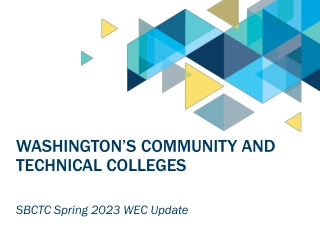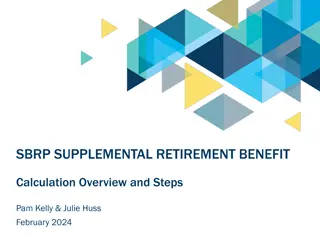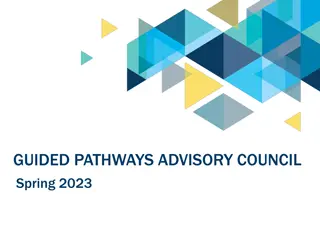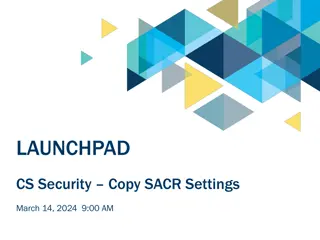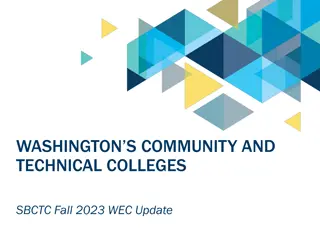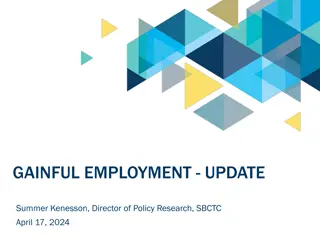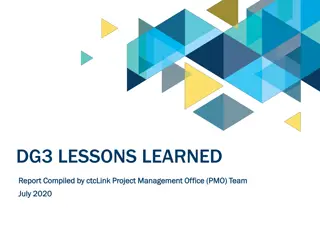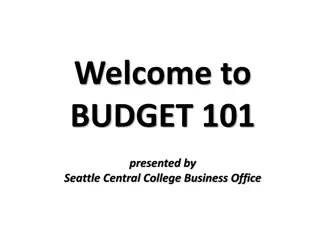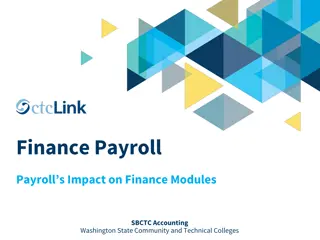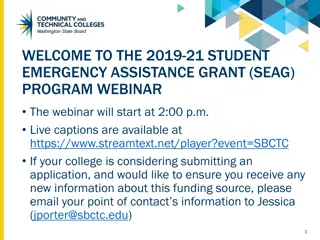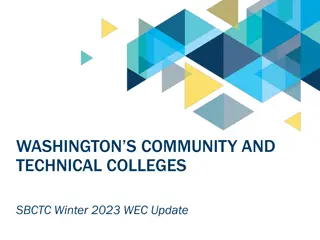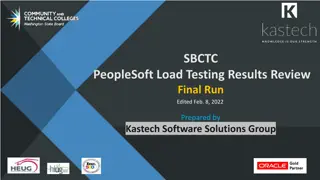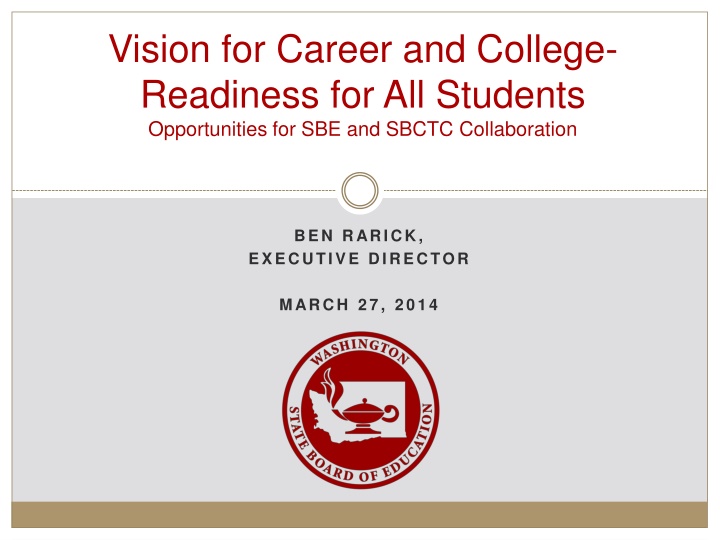
Strengthening Career and College Readiness in Education System
Enhance career and college readiness through collaborative efforts between SBE and SBCTC. Focus on bridging high school and college gap, leveraging assessments for improved course-taking, and reducing remediation rates. Highlight initiatives to strengthen graduation requirements and provide flexible instructional hours and funding. Explore pathways for personalized planning and individualized postsecondary options.
Download Presentation

Please find below an Image/Link to download the presentation.
The content on the website is provided AS IS for your information and personal use only. It may not be sold, licensed, or shared on other websites without obtaining consent from the author. If you encounter any issues during the download, it is possible that the publisher has removed the file from their server.
You are allowed to download the files provided on this website for personal or commercial use, subject to the condition that they are used lawfully. All files are the property of their respective owners.
The content on the website is provided AS IS for your information and personal use only. It may not be sold, licensed, or shared on other websites without obtaining consent from the author.
E N D
Presentation Transcript
Vision for Career and College- Readiness for All Students Opportunities for SBE and SBCTC Collaboration BEN RARICK, EXECUTIVE DIRECTOR MARCH 27, 2014
Topics for Today Bridging the Gap between High School and College How to Leverage the 11th grade Common Core (SBAC) assessment results towards improved course-taking in high school and less remediation in college. The potential for pre-remedial college transition courses in our high schools. What role can the high school and beyond planning process play? What would it take to cut remediation rates in half by 2020? Washington State Board of Education
Strengthening High School Graduation Requirements Core 24 was not well received SBE spent the last year building more flexibility into the framework. Restore Electives Strengthen Math & Science CTE Course Equivalencies so that CTE is embedded, rather than separate. Build around the concept of Personalized Pathway Requirements (PPR) Focus more on the outcomes (Career-and-College Readiness), and less on inputs (1080 hours). In the 21st century, all students need Science, Technology, Engineering and Math (STEM) skills; 3 credits of math and 3 credits of science are foundational course credits that keep our students competitive. Every student should have a High School and Beyond Plan by 9th grade or earlier, upon which all course-taking decisions will be based. All students should be preparing for their life after high school; each student s High School and Beyond Plan should identify a postsecondary pathway. College is more than just a 4-yr degree! Community colleges, trades, industry certification, etc. many individualized pathways for students of all interests and abilities. Washington State Board of Education
HIGHLIGHTS ENGROSSED SECOND SUBSTITUTE SENATE BILL 6552 (as passed Legislature pending Governor s signature) More Flexible Instructional Hour Requirements & Funding 1000 hours in grades 1-8 & 1080 hours in grades 9-12, all of which may be calculated using a district-wide annual average over grades one through twelve. (read: average of 1027 hours) $97 million provided for instructional hours increase last year is redirected to guidance counselors, supplies, class size. $34 million for lower class size for high school lab science classes. $16 million for guidance counselors $45 million for high school materials and supplies ( MSOC ) NOTE: $58 million in MSOC added to the budget beyond existing money that was redirected SBE to implement 24 career and college-ready framework for the Class of 2019. Individual school districts shall receive 1 or 2-year implementation extensions by filing with the state board of education. The culminating project is eliminated as a high school graduation requirement. *This is an initial interpretation. Rules will ultimately implement these provisions and districts should not use this presentation in place of rule language. Washington State Board of Education
SB 6552 HIGHLIGHTS (continued) The third credit of math and science are student choice, based on HSBP, with the approval of a counselor, principal, parent, or guardian. SBE must allow districts to waive 2 credits for a student, on a case-by-case basis, based on unusual circumstances. Districts must adopt local policies to administer this waiver, and WSSDA is to develop a model policy and make available for districts. Districts must offer at least one CTE math and at least one CTE science equivalency course. Districts with fewer than 2000 kids can seek a waiver. OSPI, w/ SBE, to develop more standardized approach to CTE equivalency in math & science. A new task force is created on success of students with special needs. Headed up by Office of Education Ombuds. SBE is a member of this task force. Washington State Board of Education
Graduation Requirements 24 credit framework Washington State Board of Education
Personalized Pathway Requirements Personalized Pathway Requirements are locally determined, but should reflect coursework important to pursuing a variety of post-secondary pathways, including: Attend a skills center or pursue a Career and Technical Education program of study. Pursue a certificate or degree in a professional/technical program. Pursue a 2 or 4-year degree via a college, university, or college transfer program. Washington State Board of Education
Potential Next Steps SBE rule-making Instructional hours requirement 24 credit framework CTE waiver process (potentially) Work on development of math & science CTE course equivalencies that deliver needed rigor. Collaborate on use of 11th grade SBAC test results for course placement purposes (see feedback letter). Collaborate on High School and Beyond Plan. Washington State Board of Education
Remediation What would it take to cut remediation rates in half by 2020? Strengthened course-taking in senior year (particularly math) Strengthened High School and Beyond Plan Linking the third credit of math to the content of credit-bearing coursework at community college level. Ever improving awareness/planning between the two systems. Washington State Board of Education
Stepping Stones to Career and College Readiness for ALL Students Washington State Board of Education
Questions? Washington State Board of Education
Resources Website: www.SBE.wa.gov Blog: washingtonSBE.wordpress.com Facebook: www.facebook.com/washingtonSBE Twitter: www.twitter.com/wa_SBE Email: sbe@sbe.wa.gov Phone: 360-725-6025 Washington State Board of Education

